SEO, short for Search Engine Optimization, is the practice of optimizing a website to improve its visibility and ranking on search engine results pages.
It involves various strategies and techniques aimed at increasing organic (non-paid) traffic to a website by making it more attractive and relevant to search engines.
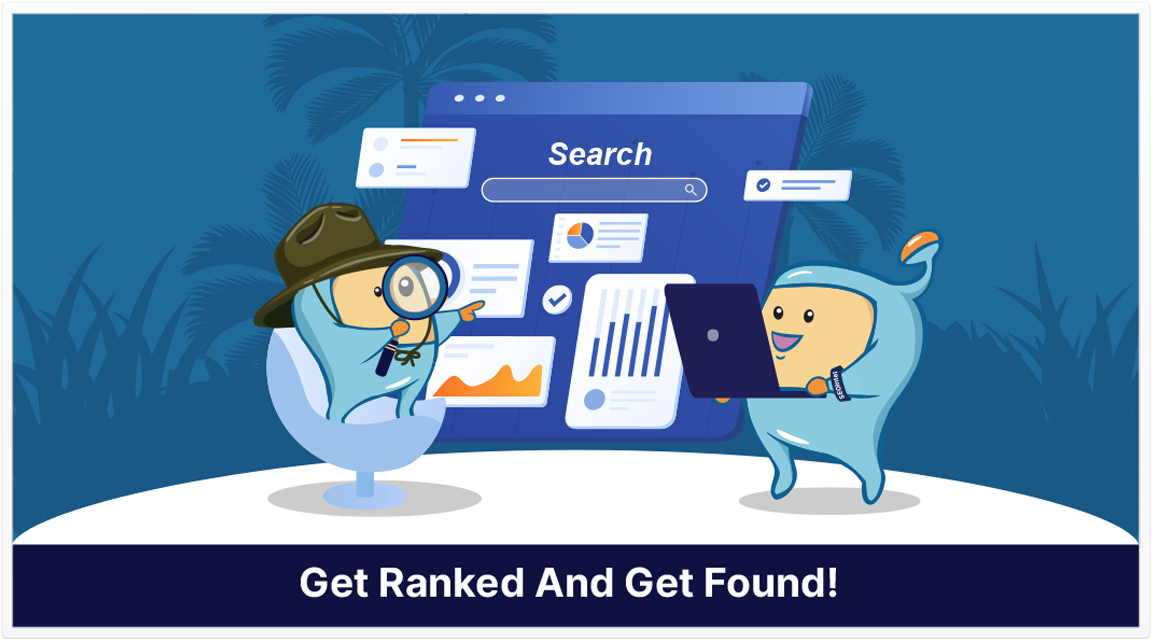
This is what you will learn in this article:
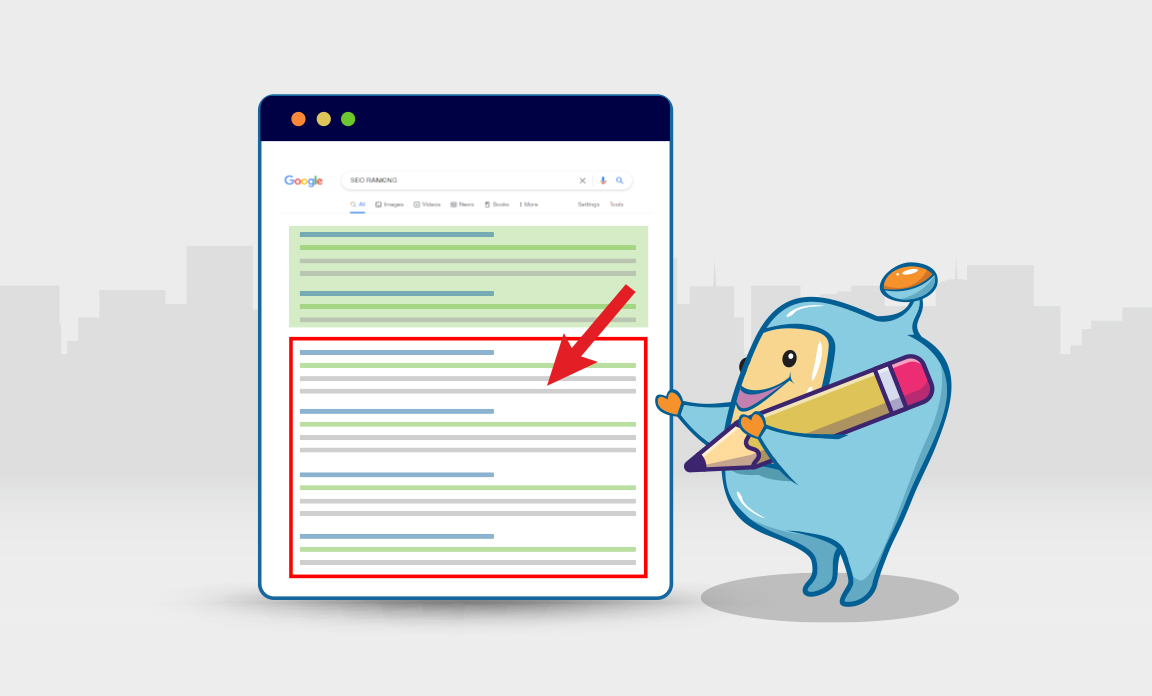
Search engines like Google use complex algorithms to crawl and index web pages, and then determine their relevance and ranking for specific search queries.
They evaluate factors such as relevancy, authority, and usefulness of the content to provide the most accurate and valuable results to users.
Relevancy is a crucial aspect of search engine rankings.
Search engines analyze the content of web pages to determine how well it matches a user's search query.
By optimizing the content with relevant keywords and providing valuable information, websites can improve their chances of appearing in search results.
Authority refers to the credibility and trustworthiness of a website.
Search engines consider factors such as the number and quality of backlinks pointing to a site, the reputation of the website, and the expertise of its authors.
Establishing authority through reputable sources and high-quality content can positively impact a website's ranking.
Search engines prioritize delivering useful and valuable content to users.
Websites that provide comprehensive, well-structured, and user-friendly information have a better chance of ranking higher.
User engagement metrics, such as click-through rates and time spent on page, also contribute to determining usefulness.
The most important SEO tip for achieving higher rankings is to focus on creating high-quality, relevant, and user-centric content.
By providing valuable information, addressing user intent, and optimizing for relevant keywords, websites can enhance their visibility and attract organic traffic.
SEO works by implementing various strategies to optimize website elements, improve content relevance, and increase visibility in search results.
This includes keyword research, on-page optimization, technical optimization, link building, and user experience enhancements, all aimed at improving a website's overall SEO performance.
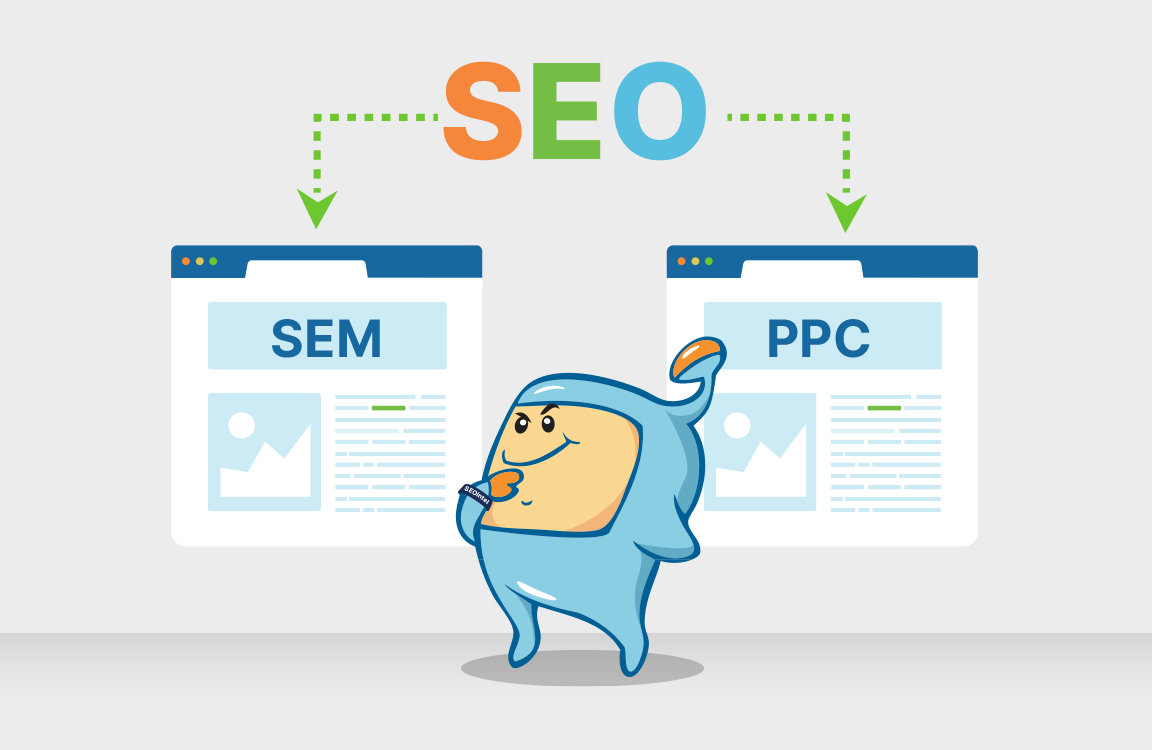
SEM (Search Engine Marketing) and PPC (Pay-Per-Click) traffic are two distinct but closely related concepts in the world of digital marketing.
SEM encompasses various strategies to increase a website's visibility in search engine results pages (SERPs), including both organic (unpaid) and paid methods. PPC, on the other hand, specifically refers to paid advertising campaigns where advertisers pay for each click on their ads.
SEM traffic includes both organic traffic, which is the result of SEO efforts and unpaid search results, and paid traffic generated through PPC campaigns.
SEM involves a more holistic approach, incorporating both organic and paid methods to improve overall visibility and generate traffic.
SEM offers the potential for long-term and sustainable traffic through organic search rankings.
Paid results, also known as pay-per-click (PPC) or sponsored listings, are advertisements that appear on search engine results pages.
Advertisers bid on keywords, and their ads are displayed when users search for those keywords.
Advertisers pay the search engine when their ads are clicked.
PPC offers more control and immediate results.
With PPC, advertisers can precisely target their desired audience, set specific budgets, and track the performance of their ads in real-time.
It's important to note that while PPC can provide quick results, it requires ongoing investment to sustain traffic, as ads disappear once the budget is exhausted.
Ultimately, the choice between SEM and PPC depends on the specific goals, budget, and timeline of a digital marketing campaign.
Some businesses find a combination of both strategies to be the most effective approach for driving targeted traffic and achieving their marketing objectives.

SEO is important because it helps websites increase their visibility and organic traffic from search engines.
Higher rankings in search results mean more exposure, credibility, and potential custome rs.
By optimizing your websites for SEO, you can gain a competitive advantage and reach yourtarget audience effectively.
Understanding customer behavior and finding the right keywords are essential for effective SEO.
Customer research helps identify the needs, preferences, and search patterns of the target audience. the website as a go-to resource for users seeking comprehensive information.
Step-by-step guides break down complex processes or tasks into easy-to-follow steps.
They provide users with a clear roadmap to achieve their goals and are highly appreciated for their practicality and usefulness.
Optimizing step-by-step guides with relevant keywords and adding visual aids can enhance their visibility and appeal.
Content that incorporates data, statistics, and research findings adds credibility and authority to the information presented.
Data-driven content helps users make informed decisions, supports claims with evidence, and establishes the website as a reliable source.
Infographics, charts, and visual representations of data can make the content more engaging and shareable.
Complete guides cover a topic comprehensively, providing users with a comprehensive resource to learn about a subject in depth.
These guides often cover multiple aspects, answer frequently asked questions, and offer valuable insights.
By creating complete guides, businesses can establish themselves as industry experts and attract organic traffic from users seeking detailed information.
Visual content, such as images, videos, infographics, and interactive elements, enhances user engagement and improves the overall user experience.
Visuals can effectively convey information, break up text, and make the content more visually appealing.
Optimizing visual content with alt tags, descriptive captions, and relevant keywords can also contribute to SEO efforts.
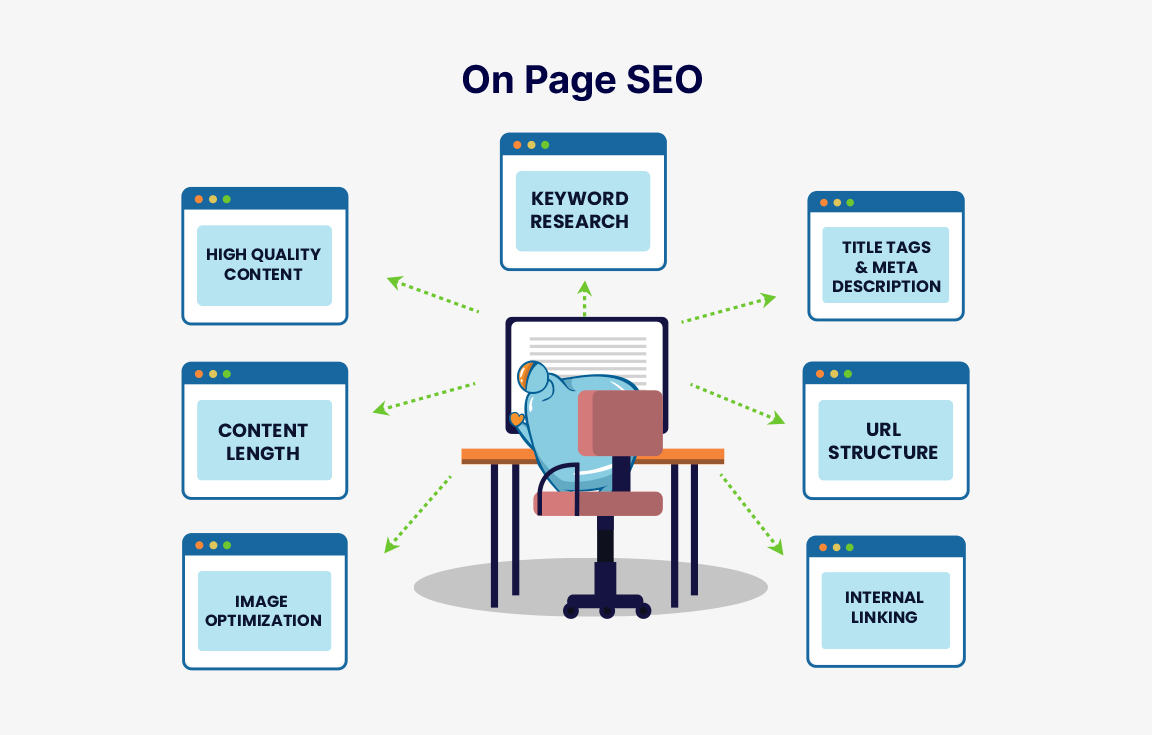
On-page SEO refers to optimizing individual web pages to improve their visibility and rankings on search engine results pages.
Several basic on-page SEO practices help search engines understand the content and relevance of a page.
Yoast is a popular WordPress plugin that provides on-page SEO analysis and recommendations.
Installing and configuring Yoast can help optimize key elements of a web page, including title tags, meta descriptions, headings, and keyword usage.
The plugin offers valuable insights and guidance to improve on-page optimization.
The title tag is an HTML element that specifies the title of a web page. Including the targeted keyword in the title tag helps search engines understand the topic and relevance of the page.
A well-crafted title tag that accurately describes the content and incorporates the keyword can enhance the page's visibility in search results.
The meta description is a brief summary of a web page's content that appears below the title tag in search results.
Optimizing the meta description involves creating a compelling and concise description that entices users to click through to the page. Incorporating relevant keywords and highlighting the unique value proposition can improve click-through rates and attract organic traffic.
Using targeted keywords naturally throughout the content signals to search engines what the page is about.
However, it's essential to maintain a balance and avoid keyword stuffing. Incorporate keywords strategically in headings, subheadings, paragraphs, and image alt tags to help search engines understand the page's topic and improve its relevance.
Diversifying keyword usage by including synonyms, related terms, and variations helps capture a broader range of search queries.
Using semantic keywords and natural language variations signals to search engines that the page covers a topic comprehensively and increases the likelihood of ranking for a wider range of relevant search terms.
Optimizing images involves reducing file sizes for faster loading speed, using descriptive filenames, and adding alt tags with relevant keywords.
Optimized images improve user experience, contribute to page speed, and enhance the accessibility of the content for users with visual impairments.
Search engines also consider image optimization as a ranking factor, so ensuring images are properly optimized can positively impact SEO efforts.
User experience plays a vital role in on-page SEO. Search engines aim to deliver the best possible results to users, which includes providing a positive user experience.
Factors such as page load speed, mobile-friendliness, intuitive navigation, clear and readable content, and responsive design all contribute to a positive user experience.
Optimizing these elements helps keep visitors engaged, reduces bounce rates, and signals to search engines that the page provides value to users.
High-quality content is a cornerstone of on-page SEO. It should be informative, well-written, and engaging to capture the attention of users and encourage them to stay on the page.
Quality content provides value, answers user queries, and satisfies their search intent. It should be original, free of plagiarism, and regularly updated to ensure its accuracy and relevance.
Search engines prioritize content that offers the best user experience, so focusing on delivering high-quality content is essential for on-page optimization.
Technical SEO involves optimizing the technical aspects of a website to improve its crawlability, indexability, and overall performance in search engines.
Several fundamental practices help ensure that search engines can effectively access and understand a website's content.
Verifying your site with the Google Search Console allows you to monitor your website's performance, identify indexing issues, submit sitemaps, and access valuable data and insights.
It provides visibility into how Google sees and interprets your site, helping you make informed decisions to optimize its technical aspects.
Creating an SEO-friendly URL structure involves using descriptive and keyword-rich URLs that accurately reflect the content of the page.
A clean and organized URL structure not only helps search engines understand the page's topic but also makes it more user-friendly and shareable.
Page speed is a critical factor for both user experience and search engine rankings.
Optimizing page speed involves minimizing file sizes, leveraging browser caching, reducing server response time, and optimizing code and scripts.
Tools like Google PageSpeed Insights can help identify areas for improvement and provide recommendations to enhance page speed.
Implementing HTTPS (Hypertext Transfer Protocol Secure) ensures that data transmitted between a user's browser and the website is encrypted and secure.
HTTPS is now a ranking signal, and having a secure website instills trust in users. Obtaining an SSL certificate and migrating the site to HTTPS can improve search visibility and protect user data.
Developing a well-structured site architecture and implementing strategic internal linking helps search engines understand the hierarchy and relationships between different pages on the site.
A logical and organized site structure improves crawlability and helps distribute link authority throughout the website, benefiting both user navigation and SEO.
As mobile usage continues to grow, optimizing websites for mobile devices is crucial.
Responsive design, fast loading speed, mobile-friendly layouts, and intuitive navigation are essential for providing a seamless mobile experience.
Mobile optimization is not only important for user satisfaction but also a significant ranking factor in search engines' mobile-first indexing.
Google Analytics provides valuable insights into website performance, user behavior, traffic sources, and conversions.
Tracking and analyzing data allows you to measure the effectiveness of your SEO efforts, identify areas for improvement, and make data -driven decisions.
By monitoring key metrics such as organic traffic, bounce rates, time on page, and conversion rates, you can assess the impact of your technical SEO optimizations and make necessary adjustments to improve your website's performance.
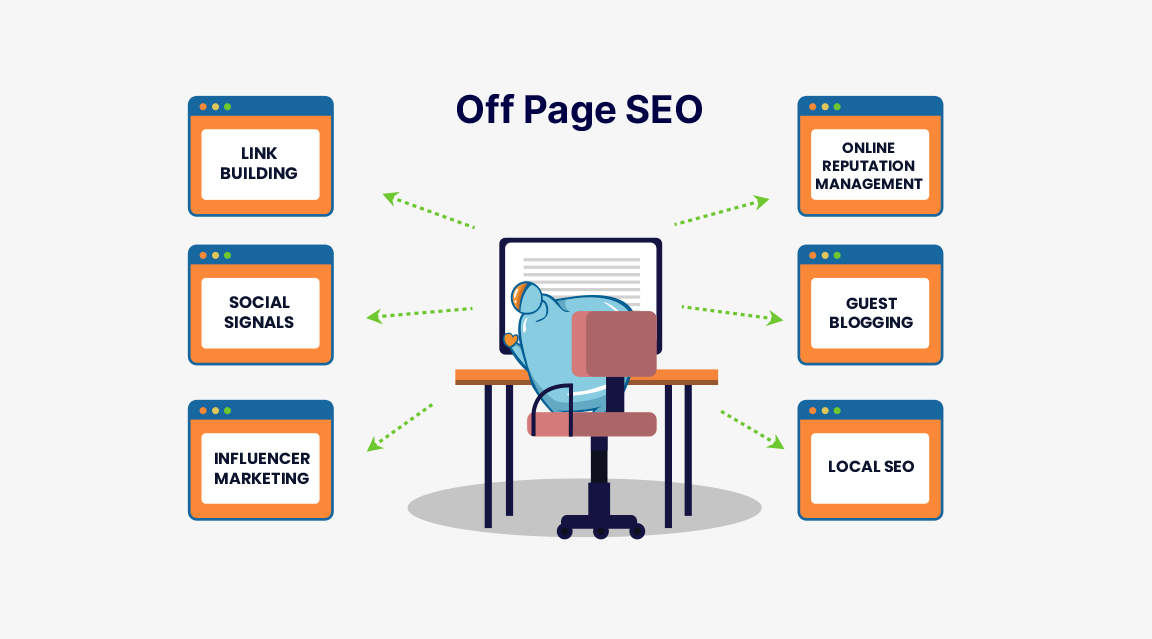
Off-page SEO refers to the strategies and activities performed outside of your own website to improve its search engine rankings and increase its online visibility.
While on-page SEO focuses on optimizing your website's content and structure, off-page SEO involves building external signals and establishing your website's credibility and authority in the online landscape.
Off-page SEO primarily revolves around link building, which entails obtaining high-quality backlinks from other reputable websites.
These backlinks act as votes of confidence and can significantly impact your website's search engine rankings.
Other off-page SEO tactics include social media marketing, influencer outreach, online reputation management, and content promotion.
Link building is a crucial off-page SEO strategy that focuses on acquiring high-quality backlinks from external websites to improve your website's visibility and authority in search engine rankings.
By obtaining relevant and authoritative links, you can enhance your website's reputation and signal to search engines that your content is valuable and trustworthy.
Link building involves various tactics, such as outreach, guest posting, content creation, and relationship building.
A strong and diverse backlink profile can positively impact your organic rankings, drive referral traffic, and increase the overall credibility of your website.
Link authority refers to the quality and influence of a linking website.
Acquiring backlinks from authoritative websites with high domain authority and industry relevance can significantly boost your own website's authority and credibility.
Building relationships, creating valuable content, and leveraging social media platforms can help attract authoritative links to your website.
Relevance is crucial in link building.
Search engines value links from websites that are topically related to your own.
Acquiring backlinks from relevant websites helps establish your website's authority within your industry or niche.
Outreach to industry influencers, guest posting on related blogs, and participating in relevant forums or communities can help secure relevant backlinks.
Link building techniques can be classified as either white hat or black hat.
White hat SEO techniques focus on building links naturally and ethically, following search engine guidelines.
Black hat SEO techniques involve manipulative practices that violate search engine guidelines and can result in penalties.
It's essential to focus on white hat strategies such as creating valuable content, engaging in outreach, and fostering genuine relationships to build sustainable and effective links.
The Skyscraper Technique is a popular white hat link building strategy.
It involves identifying popular content in your industry, creating even better and more comprehensive content, and reaching out to websites that have linked to similar content in the past.
By offering an upgraded version of existing content, you increase the chances of earning high-quality backlinks from relevant websites.
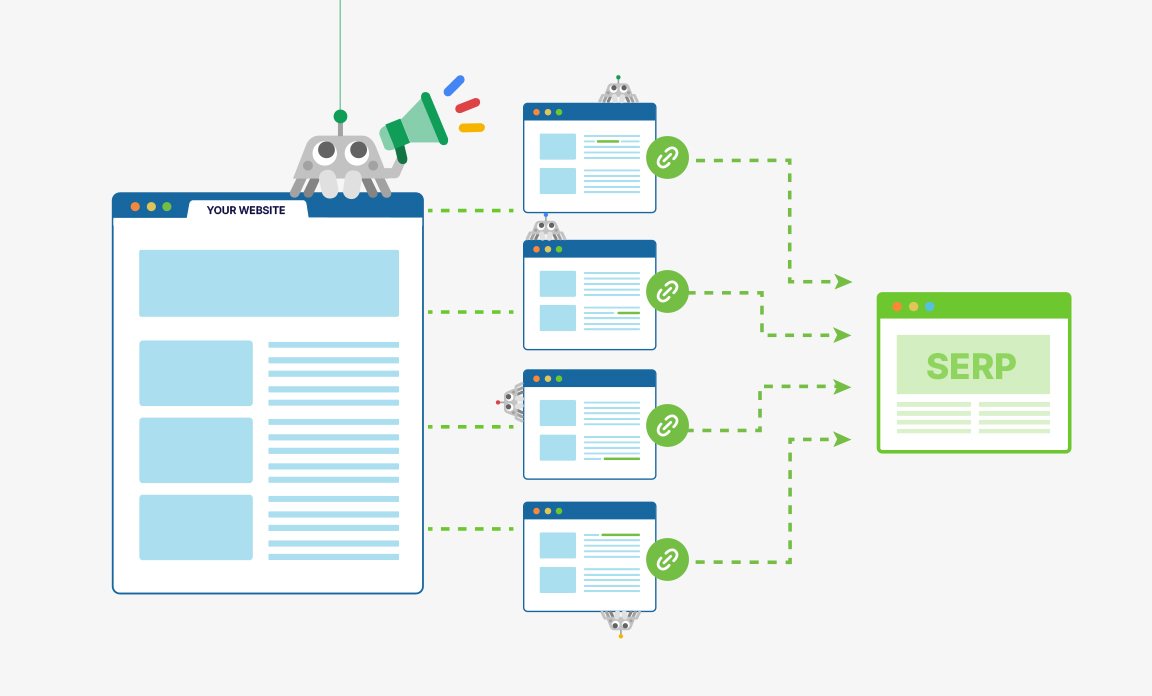
Linkable assets are valuable resources or content pieces that naturally attract backlinks.
They can include industry studies, myth-busting articles, visual guides, free tools, or curated lists of tips and resources.
Creating linkable assets provides opportunities for other websites to link to your content, increasing your website's visibility and authority.
By offering unique and valuable resources, you can earn organic backlinks from websites interested in sharing your content.
Social signals play a significant role in off-page SEO by demonstrating the popularity, relevance, and engagement of your content on social media platforms.
Social signals include likes, shares, comments, and other forms of interactions that indicate the value and impact of your content.
Search engines consider social signals as a measure of user satisfaction and quality, which can influence your website's search engine rankings.
By actively engaging with your audience, encouraging social sharing, and building a strong social media presence, you can generate positive social signals that contribute to improved organic visibility and increased traffic to your website.
Influencer marketing is an off-page SEO strategy that involves collaborating with influential individuals or industry experts to leverage their authority and reach a wider audience.
By partnering with influencers who have a significant following and influence in your target market, you can tap into their credibility and gain exposure to their engaged audience.
Influencers can help promote your content, products, or services, resulting in increased brand visibility, website traffic, and potential backlinks.

Online reputation management is a critical off-page SEO aspect that focuses on monitoring, building, and maintaining a positive online image for your brand or business.
It involves actively engaging with customers, addressing their concerns, and seeking positive reviews and testimonials.
By managing your online reputation effectively, you can mitigate negative feedback, enhance customer trust, and improve your website's credibility.
Positive online reviews and a strong reputation can also indirectly influence your search engine rankings, as search engines consider user sentiment and brand reputation as ranking factors.
Guest blogging is an off-page SEO technique that involves writing and publishing content on external websites or blogs within your industry.
By contributing valuable and informative guest posts, you can showcase your expertise, build your authority, and gain exposure to a new audience.
Guest blogging not only helps to establish your brand as a thought leader but also allows you to include relevant backlinks to your own website, enhancing your backlink profile.
It is important to choose reputable and relevant websites for guest blogging, ensuring that the content aligns with your target audience's interests and provides value to both the readers and your overall SEO strategy.
Local SEO is a specialized off-page SEO strategy that focuses on optimizing your website and online presence to improve visibility in local search results.
It is essential for businesses targeting a specific geographical location or catering to local customers.
Local SEO involves optimizing your Google My Business listing, ensuring accurate and consistent business information across online directories, and incorporating location-specific keywords in your website content.
By optimizing for local SEO, you can increase your chances of appearing in local map packs, local search results, and Google's "near me" searches.
Understanding search intent is critical for effective SEO.
Search intent refers to the underlying motivation behind a user's search query.
By aligning your content with search intent, you can improve your chances of ranking higher in search results and providing relevant information to users.
Aligning your content with search intent can have a significant impact on search engine traffic.
By identifying the specific search intent behind target keywords, you can optimize your content to better satisfy user needs.
Analyzing search results and competitors can help uncover gaps in content and tailor your content strategy accordingly, leading to increased organic search traffic.
User signals refer to the behavioral patterns and interactions of users with search results and websites.
Search engines analyze user signals to evaluate the relevance, quality, and user satisfaction of a webpage.
User signals include metrics such as click-through rates (CTRs), bounce rates, time spent on page, and conversion rates.
Optimizing for user signals involves creating content and website experiences that meet user expectations and provide value.
Here are some strategies to optimize for user signals:
Compelling Meta Titles and Descriptions: Craft enticing meta titles and descriptions that accurately represent your content and encourage users to click through to your website.
Clear and Engaging Content: Create content that is well-structured, easy to read, and provides valuable information.
Engage users with compelling headlines, subheadings, and visual elements to keep them on your page.
Fast Page Load Speed: Improve website performance and minimize load times to provide a smooth and responsive user experience.
Users are more likely to abandon slow-loading websites, negatively impacting user signals.
Mobile-Friendly Design: Ensure your website is optimized for mobile devices, as an increasing number of users access the internet from smartphones and tablets.
Responsive design and mobile-friendly layouts enhance user experience and satisfaction.
Relevant and Targeted Content: Understand your target audience and deliver content that directly addresses their needs and search queries.
By providing relevant and useful information, you increase the chances of users staying on your page and engaging with your content.
Intuitive Navigation: Design a user-friendly website structure with intuitive navigation menus, clear internal linking, and a logical hierarchy of content.
Users should be able to find the information they need easily and navigate through your site seamlessly.
Calls to Action (CTAs): Incorporate clear and persuasive calls to action throughout your content to guide users towards desired actions, such as subscribing, downloading, or making a purchase.
Well-placed CTAs can improve user engagement and conversion rates.
By focusing on optimizing user signals, you enhance the overall user experience, increase user satisfaction, and ultimately improve your website's search engine rankings.
Keeping up with the latest trends in SEO is crucial to stay ahead of the competition and adapt to evolving search engine algorithms. Here are some emerging SEO trends to pay attention to:
Schema markup is a structured data vocabulary that helps search engines understand the content on your website better.
By implementing schema markup, you provide additional context and details about your content, which can result in enhanced search engine visibility and the potential for rich snippets and featured snippets in search results.
E-A-T stands for Expertise, Authority, and Trustworthiness.
Google has placed increasing importance on these factors when evaluating the quality and credibility of websites.
Building your website's E-A-T involves demonstrating expertise in your field, establishing authority through reputable links and endorsements, and ensuring the trustworthiness of your content and website.

With the rise of voice assistants and smart speakers, voice search is becoming increasingly prevalent.
Optimizing your website for voice search involves understanding natural language queries, incorporating conversational keywords and phrases, and providing concise and direct answers to common questions.
Voice search optimization can improve your visibility in voice search results and cater to the growing number of users relying on voice assistants for information.
Core Web Vitals are a set of user-centric performance metrics that measure aspects of website usability, including page loading speed, interactivity, and visual stability.
Google has made Core Web Vitals an important ranking factor, and optimizing your website to meet these metrics can improve user experience and potentially boost your search engine rankings.
YouTube is the second-largest search engine, and optimizing your videos for YouTube SEO can greatly improve your visibility and reach.
Focus on creating engaging and high-quality video content, optimizing video titles, descriptions, and tags with relevant keywords, and encouraging user engagement through likes, comments, and shares.
Keeping an eye on these emerging SEO trends and implementing appropriate strategies can help you stay ahead in the ever-evolving digital landscape and maximize your website's visibility and success in search engine rankings.
In conclusion, understanding the fundamentals of SEO and implementing effective strategies is essential for improving your website's visibility, attracting organic traffic, and ultimately achieving your online goals.
SEO encompasses various aspects, from optimizing your website's technical elements to creating high-quality content, building authoritative backlinks, and staying up to date with emerging trends.
By grasping the concept of SEO and how search engines work, you can optimize your website to meet the criteria that search engines look for in delivering relevant, authoritative, and useful results to users.
Understanding the importance of keywords and conducting thorough research allows you to align your content with the needs and preferences of your target audience.
Creating SEO-friendly content that is informative, engaging, and tailored to both your customers' needs and search intent can significantly enhance your website's performance in search engine rankings.
Moreover, paying attention to on-page SEO elements, such as title tags, meta descriptions, and image optimization, ensures that search engines can crawl and understand your content effectively.
Link building remains a crucial aspect of SEO, and by focusing on acquiring high-quality backlinks from relevant and authoritative websites, you can enhance your website's authority and visibility in search results.
Additionally, staying updated with emerging trends like schema markup, E-A-T, voice search optimization, core web vitals, and YouTube SEO allows you to adapt your strategies to the evolving search landscape and gain a competitive edge.
Remember, SEO is an ongoing process that requires continuous monitoring, analysis, and adaptation.
Regularly tracking your website's performance through tools like Google Analytics helps you understand the impact of your SEO efforts and make data-driven decisions to optimize your strategies further.
By investing time and effort into SEO, you can drive organic traffic, increase your website's visibility, and ultimately achieve your business objectives in the digital realm.
Start with the basics, refine your strategies, and embrace the ever-evolving world of SEO to unlock the full potential of your online presence.